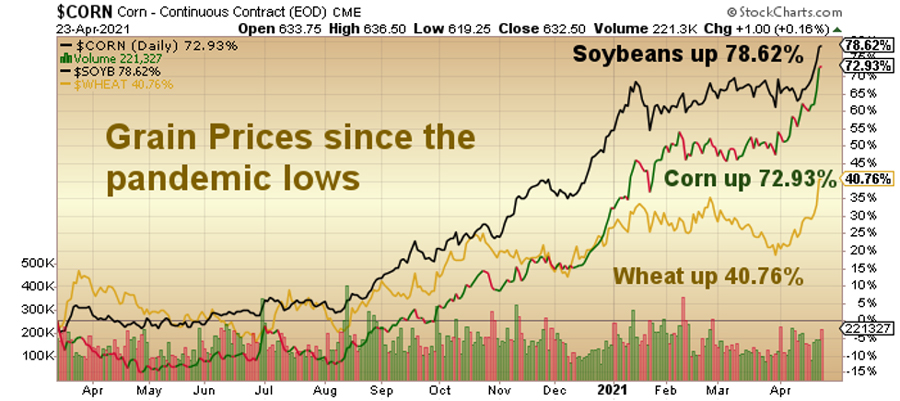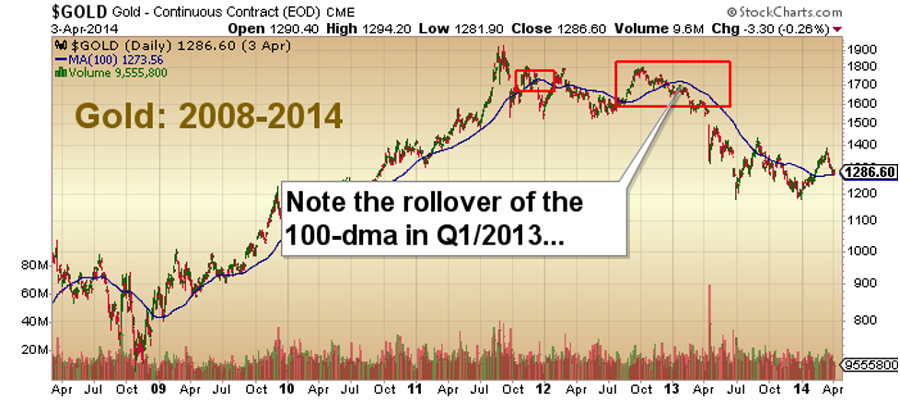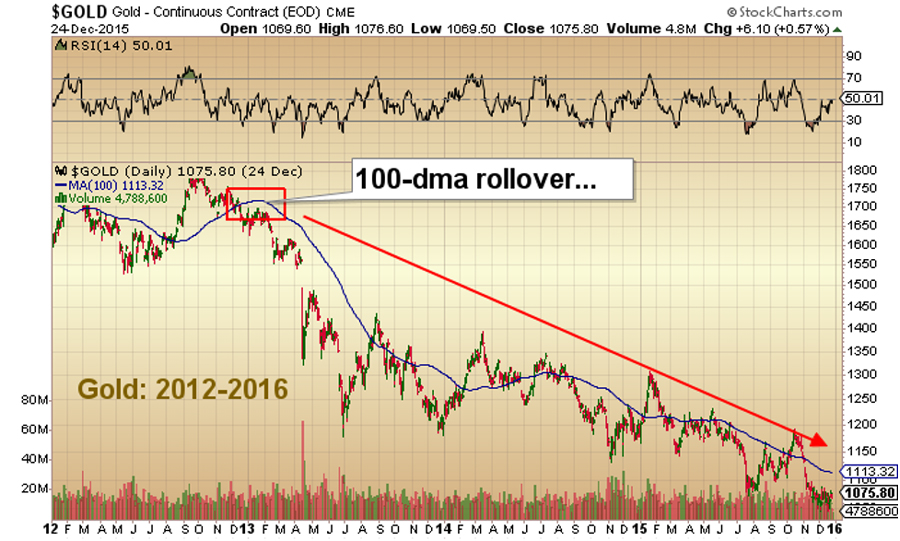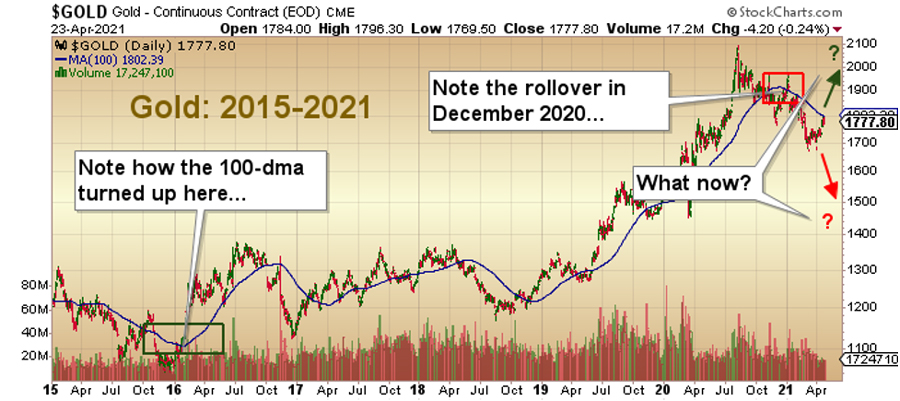Send this article to a friend:
April
29
2021

Send this article to a friend: April |
 |
Sparing the Dime: The Dangers of Fudging Inflation Numbers
In 1932, a couple of songwriters named E.Y. “Yip” Harburg and Jay Gourney were struggling to come up with a song for a new musical called “New Americana” when, returning to the studio, they were approached by a frail, young man with upturned collar and hat pulled low who asked them, “Buddy, can you spare a dime?” That encounter led to the creation of a song whose lyrics and message became the anthem of the Great Depression, while songs heavily promoted by the establishment included “Happy Days are Here Again” and “The Sunny Side of the Street.” Such blatant propaganda was commonplace in the early Thirties, just as it is today, as citizens back then were asked to believe that things were going to soon get better or, in the case of 2021, that the Consumer Price Index (CPI), without the impact of food and energy, is a realistic portrayal of the true rate of increase in the cost of living for the average citizen. What prompted the theme of this missive was a glance at the chart book while trying to discern the components of the Gold Sachs Commodity Index. As followers of my work know all too well, I do not and will not ever trust numbers offered up by government bureaucrats under pressure from incumbent leaders. When power is the aphrodisiac of choice, fudging inflation numbers is an easy exercise. 
In recent months, we have been exposed to a steady, nauseating diet of government reports depicting “strong economic recovery” the world over, as the year-over-year performance numbers are constantly compared to the post-pandemic crash that crippled the global economy in 2020. The purveyors of this economic slop would never use a three-year or five-year comparison, because that would be counterintuitive to the desired “Happy Days are Here Again” narcotic so necessary in the power and reelection process. “Groom their minds!” with bountiful stimmy cheques and rent moratoria, and “watch how quickly they offer up their votes,” as subliminal prevarication bends the public perception of “conditions.” One look at the chart of the grains (shown above) and you will be feeling the impact of a picture being worth a thousand words, as the U.S.-dollar-denominated prices for corn, wheat and soybeans—the “Big Three” of world food pricing—are showing breathtaking increases that are most assuredly going to show up in cost of bread, pasta, soup and a variety of other foodstuffs. Sadly—no, outrageously—with grain sitting as a foundation cornerstone of the Hierarchy of Needs pyramid, citizen-voters will never see any of these increases in the published CPI numbers (which exclude food and energy) circulated through the world by the Ministry of Thought central planners who can only be seen as “perpetrators.” Nor will the cost of buying or building a new home, because only rent is included in the CPI numbers, rather than the true cost of the asset that collects the rent. In a manner most foul, we are subjected to this malodorous macrocosm of misinformation with the hope that consumer spending habits will remain robust while inflationary expectations are subdued. And this occurs all the while stocks hit day after day of record highs amid year-over-year “Blowout Numbers!” trumpeted by the Wall Street spin machine. 
I bring your attention to the chart of gold from 2008 to 2014, with particular emphasis upon the 100-day moving average (100-dma) in Q1/2013 and how it executes a near-perfect “rollover” before heading lower. In fact, the next chart shows the period of 2012–2016 and what that rollover predicted, and it goes without saying that it was not exactly “pretty.” 
So, here is where we are in the spring of 2021, having experienced the rapture of a fifty-three-month bull market in gold prices and now facing a critical juncture for the health of that bull market uptrend. It must recapture the 100-dma above US$1,802.40, and quickly. 
For the better part of 2021, I have been forced to trade gold, which was not the case after March 16, 2020, when I went “all-in” gold and gold miners, and bought a raft-full of GDX December calls that worked out beautifully and made my year. However, since the August peak, I have avoided the Senior and Junior Gold miners (GDX/GDXJ), choosing instead to dabble (largely without success) in individual names that seem to be unable to find a bid. I have been maintaining overweight positions in the junior gold and silver developers, but a significant departure for me and for my subscribers is that I have allocated new money to copper by way of the junior copper developers such as Allied Copper Corp. (CPR:TSX) and Northisle Copper and Gold Inc. (NCX:TSX.V). The point I make today is that after the embarrassing failure of the silver market back in early February, precious metals are back “on their heels” and are facing these blowout year-to-year economic numbers that have served to mask the impact of the central bank money-printing orgy. With the inflation numbers that I showed you earlier in this missive suggesting a massive “overshoot” by the Fed in its experiment in inflationary monetary policy, gold and silver should be double their current prices to match the double we are seeing in everything else, including copper, which was upgraded by all of the Wall Street banks in the past month. The reason I am diversifying portfolio allocations to include non-precious metals developers is that I absolutely refuse to ride out a 2011–2015 downturn, as happened in ten years ago. I kept looking at the printing presses that were on overdrive in 2009, saving the criminal banking system, and thinking “this counterfeiting (QE, TARP, TWIST, etc.) has got to be inflationary, so the precious metals are going to go crazy.” Well, they did “go crazy,” but whether it was manipulation or intervention or interference by the bullion banks under strict orders from treasury departments around the world, the net result was a vicious bear market that almost destroyed the junior mining sector. In a perfect and normal world, precious metals would be embraced as safe havens for every generation on the planet, but for a myriad of reasons, they are not. Further prompting me to self-medication and the pinot grigio penalty box is this incessant whining and complaining in the blogosphere and Twitterverse about the gold and silver shenanigans, which have been around since the 1970s. The changes that everyone wants to see occur will only happen if the younger generations of investors decide to take on the banks, the regulators, the Department of Justice (DoJ) and the U.S. Treasury. What may trigger that is a move by Janet Yellen to impose a huge capital gains tax on crypto, because if that happens, the gauntlet will have been thrown by a baby boomer, in direct confrontation with the Millennials and Gen-Xers who worship crypto. Such violations of free market capitalism have been suffered by gold and silver investors since 1980, when the banks, the regulators, the DoJ and the U.S. Treasury launched a criminal conspiracy to crush the Hunt Brothers and silver, and succeeded in spectacular fashion. My investment theme for the balance of 2021 is going to be focused on “electrification,” which includes the metals needed to conduct the electricity (copper, silver) and producers of clean and reliable electric power (uranium). I have my core positions, and therefore more-than-adequate exposure to gold, silver, uranium and copper, so all that is left is for me to find exposure to food price inflation (without having to buy the farm). That will include all aspects of the agribusiness food chain, with particular emphasis on businesses that can benefit from high grain prices such as chemicals used as insecticides and fertilizers. It was legions of “rich farmers” who were the money behind the big mining operations in northern Ontario and Quebec over one hundred years ago and I, for one, am delighted if we see a return to the day when university degrees in agriculture dominate finance and economics as the youngsters jettison those skin-tight suits and pointy-toed shoes in favor of dungarees and John Deere tractor hats. However, one must beware of extended breath-holding in expectation of illusory dreams.
Follow Michael Ballanger on Twitter @MiningJunkie. He is the Editor and Publisher of The GGM Advisory Service and can be contacted at [email protected] for subscription information. Originally trained during the inflationary 1970s, Michael Ballanger is a graduate of Saint Louis University where he earned a Bachelor of Science in finance and a Bachelor of Art in marketing before completing post-graduate work at the Wharton School of Finance. With more than 30 years of experience as a junior mining and exploration specialist, as well as a solid background in corporate finance, Ballanger’s adherence to the concept of “Hard Assets” allows him to focus the practice on selecting opportunities in the global resource sector with emphasis on the precious metals exploration and development sector. Ballanger takes great pleasure in visiting mineral properties around the globe in the never-ending hunt for early-stage opportunities.
|
Send this article to a friend:
 |
 |
 |